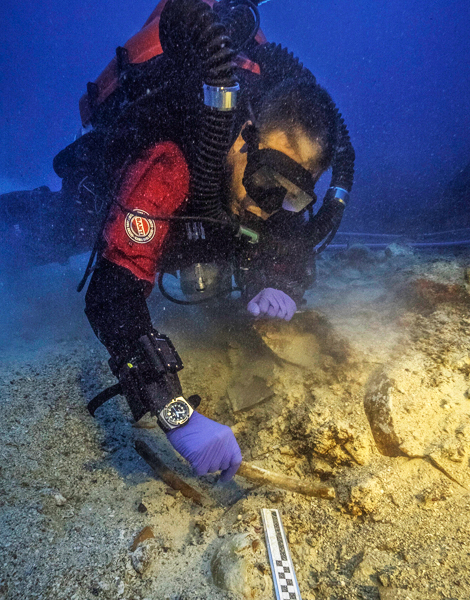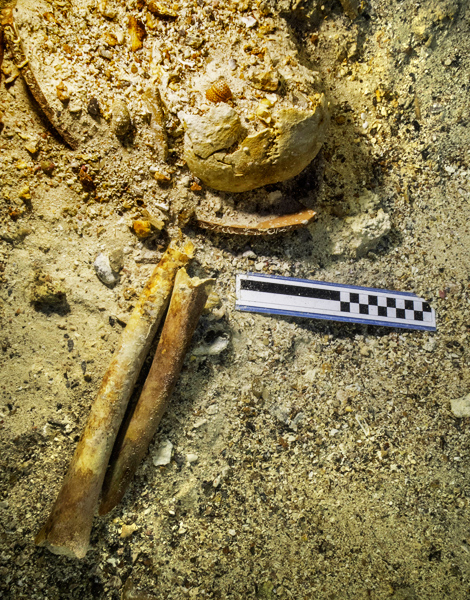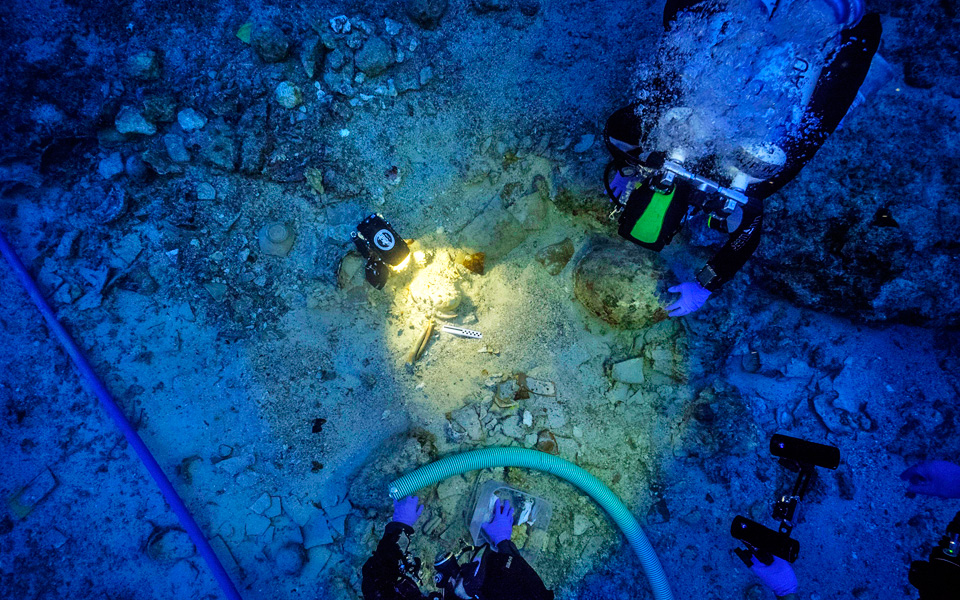The skeletal remains of a person who was on board the Antikythera Shipwreck at its moment of sinking have been identified and raised from the seabed during an investigation conducted by the Department of Underwater Antiquities and the Woods Hole Oceanographic Institute , between August 28 to September 14. This is the second excavation mission at the site within the same year.
Bones from at least four different people had already been identified at the wreck during the investigations in the years 1900 – 1901 and 1976. The position of the bones and their relationship with the other findings nearby point to a violent shipwreck. It is hoped that DNA analysis yields evidence of the deceased such as gender, age at death and other clues about their life.


According to the announcement by the Ministry of Culture, an important find is that of a lead object weighing 50 kgs. On the basis of its features, the object resembles a probe used to measure the the depth of the seabed and to assess its nature. This tool was considered vital for safe navigation in antiquity. Similar objects have been found dating from at least the 6th century. It is the second such object found at the wreck, the first being discovered between 1900 – 1901.
The results will be analyzed at the Department of Underwater Antiquities’ new laboratory, which will contribute to the timely and effective maintenance of the findings from this important wreck. The work is being carried out with the support of the Aikaterini Laskaridis Foundation.
The research on the Antikythera shipwreck is being carried out under the auspices of the Presidency of the Greek Republic and the funding secured by the Woods Hole Oceanographic Institute.












